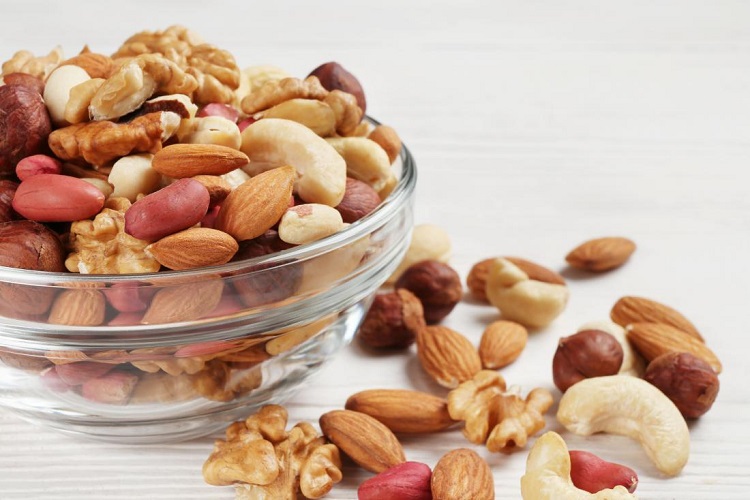For most people, cacao is a synonym for chocolate. It’s not wrong. But if we talk about nutritious values, Cacao is far better than a chocolate bar. Still, it comes with certain side effects.
The most prominent side effect of cacao is sleeplessness, frequent urination, and heart palpitation. Even though roasted cacao tastes better, it’s safer and more nutritious when it’s raw.
Knowing how to eat cacao properly can help you cut those side effects smartly. That’s what this article is all about. So, check it out.
Is Cacao & Cocoa The Same?
Most people refer to cocoa when they say cacao beans. But the truth is, both are different things. Cacao (Theobroma Cacao) is a fruit with edible seeds. It comes in the shape of a pod with 20 to 60 seeds in a row. If we talk about taste, raw cacao is on the bitter side, reminiscent of fresh soil.
On the other hand, we have cocoa which actually is the solid texture left after fermenting, roasting, and extracting cocoa butter. During the process, it loses some of the flavanols, minerals, and antioxidants.
So, now you know what exactly is the difference. Both terms refer to two different stages in the production of chocolate.
What Are The Possible Side Effects Of Cacao Products?
Almost everything has side effects if not taken within a limit. Cacao is no different from that.
However, it has become necessary to talk about the side effects people often suffer from mostly because they are not aware of them.
Frequent Urination
Drinking 3 to 4 cups of coffee per day can cause contractions in your bladder. It leads you to pee more than usual. Now, 3 to 4 cups of coffee contain around 400 to 450 mg of caffeine. And, caffeine is the main villain here.
However, cacao products which are yet to become chocolate, don’t contain as much caffeine. But you can still have those side effects if you intake too much.
You see, caffeine is found to be a diuretic. It triggers our kidneys to send back the water instead of absorbing it. Hence, you end up waking up in the middle of the night to urinate which of course, isn’t pleasant at all.
Insomnia
Not being able to sleep well at night is another side effect. But it mostly happens when you intake cacao nibs. It is the stage where you roast and grind the fermented cacao beans. The unsweetened version contains a high amount of caffeine (230 mg against 100g of cocoa).
To understand it better, your favorite Hershey’s milk chocolate contains 9 mg of caffeine per 1.5 ounces. And, if you choose the unsweetened version, that would give you 30 mg of caffeine per 1.5 ounces. You see, the darker you go, the more caffeine you get.
According to reports, taking so much caffeine before bed can hamper your sleep quality. It’s a big disadvantage for people struggling with insomnia already.
Heartburn
The dietary fiber and theobromine within cocoa/cacao can increase heartburn symptoms. It’s because cocoa is hard on our stomachs. Unless you have a very strong gut, there’s a chance cacao will trigger indigestion.
When it stays too long within your stomach, your gut starts to get irritated. As reflux, it sends some gastric acids back to the esophagus.
Hence, you start to feel your heartburn. It only gets worse if you suffer from GERD (gastroesophageal reflux disease) already.
Headaches
There’s a term called “theobromine poisoning.” It means, intaking a high amount of theobromine which ultimately works like a toxin within your body. Around 0.3 mg of theobromine is present within half an ounce of cacao powder.
This chemical is historically known as God’s food due to its ability to put you in a good mood. In short, you feel better after eating food high in theobromine.
But that’s pretty much all the benefits you get. Taking too much of it can trigger symptoms like dehydration, anxiety, heart palpitations, sweating, and so on.
Not just that, if you have a history of migraine, you might suddenly have an episode after eating cacao.
Irritated Baby
During the breastfeeding stage, what mothers eat affects the quality of milk they produce for the baby. If the mother is taking too much caffeine through cacao products be it sweet or dark chocolate, the baby will be affected. It’s even more prominent with newborns than toddlers.
According to medical experts, caffeine can stay in a newborn’s stomach for as long as 97 hours. The time decreases as the baby grows. A 6-months old baby can digest caffeine within 2-4 hours.
But it surely makes your baby fussy. They are not familiar with the effects of caffeine. It’s hard for them to fall asleep.
So, if you are wondering why your baby never sleeps and gets irritated, check how much cacao products you eat per day.
Which Form Of Cacao Is The Safest?
By now, you must know there are different ways of using cacao.
The powder form is the most famous one. Unroasted cacao powders have a high amount of antioxidants (more than 25,000), flavonols, magnesium, iron & theobromine.
It’s the best possible way to add cacao to your daily diet without losing its benefits. It will put you in a happy mood without a high amount of caffeine.
Next, you can try the cacao nibs/cocoa powder. But both of these forms require you to roast the cacao beans first. That decreases the nutritious value we earlier discussed. Plus, the caffeine percentage increases per tablespoon in this form.
Another way to use cacao is to eat dark chocolate (70 to 100%). It is produced after extracting cocoa butter from the roasted powder. The leftover solid is raw dark chocolate.
It helps with mood and lowers your blood pressure. However, it contains a high amount of caffeine (85g to 135g per ounce). So, all the negative side effects we mentioned, will be applied here.
We find the cacao powder to contain a minimum caffeine percentage per tablespoon. By far, that’s the safest way to eat cacao.
Should You Consume 100% Raw Cacao?
Raw cacao is absolutely better. It contains antioxidants and minerals. Normally, our bodies don’t produce minerals and depend on outer sources for them.
Hence, consuming raw cacao is a great way to add minerals to your body. If you don’t mind the earthy flavor, raw cacao would be the best for your gut health.
How Do You Consume Raw Cacao?
Despite all the health benefits, raw cacao doesn’t have a very exciting taste. But, that shouldn’t stop us from making use of its nutrition. Here’s how to consume raw cacao.
The most popular way is to drink brewed cacao. Raw cacao powder is the main ingredient in this recipe. It won’t taste like regular coffee for sure due to the low percentage of caffeine. But it still has enough theobromine to feel motivated and energized.
Next, you can add/sprinkle cacao powder on smoothie bowls to add texture. It doesn’t manipulate the actual taste of the food. But, a thicker consistency always helps you feel fuller after a meal.
Who Should Avoid Consuming Cacao?
Pregnant women often feel nervous while eating cacao products including chocolate. However, studies show that cacao has no impact on pregnancy. It’s merely a rumor.
But there is a certain group who should not consume cacao at all. Let’s find out.
Patients Taking Antidepressants
If you are on antidepressants, be cautious while eating cacao. Most antidepressants don’t react well with cacao. It’s even worse with MAOIs or SSRIs group of medications.
The pills will stop the cacao product from fully breaking down. That causes chemicals like tyramine to level up in your body. It increases blood pressure including many other health complications.
So, no matter how you want to intake cacao, it’s important to get your doctor’s verification first.
Toddlers
Babies below the age of 6 months usually intake caffeine through breast milk. It happens when the mother eats cacao products several times a day.
But for toddlers, it’s usually eating chocolate bars. Toddler moms introduce cacao to their children because it promotes happy emotions.
In simple words, cacao helps your baby stay in a good mood. But, children below the age of two, shouldn’t intake cacao products according to pediatricians.
It affects their sleep and increases anxiety and discomfort. They become too fussy to deal with if the dose was high. Also, it’s hard to introduce the raw cacao to a toddler since they have strong taste buds.
For the same reason, if you leave them unattended with a large choco bar, they won’t know how much is too much. It’s overall dangerous.
Pets
We have a tendency to share chocolate with our loved ones. But that shouldn’t include pets (cats or dogs). Their digestive system is very different from ours.
Cacao/cocoa products contain theobromine. It’s in the chemical structure. But pets, unlike us, can’t digest this particular chemical. It stays within their body for a long time and turns into a toxin.
So, no matter how much your pets love the taste, try to avoid cacao products as a treat.
How to Minimize Potential Side Effects of cacao?
We have given enough attention to the side effects. But you can easily prevent them by taking precautionary measures. Here’s what you can do instead of totally avoiding it.
Avoid Cacao Before Bedtime
If you don’t stay up all night, avoid consuming cacao just before bedtime. It doesn’t mean 5 to 10 minutes before hitting the bed. If your bedtime is at 12.00 am, try to skip cacao after 9.00 pm.
It takes that much time for the caffeine to fully become effective.
Stay Hydrated
Too much cacao triggers urination. That means the kidney is not absorbing as much water anymore. It’s worse with regular coffee grounds. However, just to be on the safer side, make sure you hit your daily water goal.
Drinking enough water also helps overcome digestion issues if you have a weak gut.
Track Your Caffeine Intake
Tracking how much caffeine you are putting in your body, is the best way to prevent the side effects.
If you are drinking regular coffee, it’s very easy to intake 400 mg of caffeine. That brings a whole lot of problems to your health.
Try to keep it within 200 mg. You can do that by switching to brewed cacao.
As you know, one tablespoon of cacao nibs only contains 4.6 mg of caffeine. You can stay very low on caffeine this way.
Choose The Right Form
Oftentimes, we choose the wrong form of cacao from the supermarket. As long as you are not looking for cacao pods, it’s easy to get confused.
For example, you might bring cocoa powder thinking it’s cocoa.
We would suggest you read the ingredient list carefully. If it has sugar, there’s no way it’s right.
To stay on the healthier side, unsweetened, unroasted cacao paste or powder is great. If you want something more flavorful, go for cacao nibs.
Is There Any Health Benefit Of Using Cacao Products?
There’s a lot actually. Otherwise, why would people be so eager to add these bitter beans to their diet chart? Take a look at some of them.
Happy Mood
Even though theobromine should be taken in low quantities, it really helps our pituitary gland to release serotonin. This particular hormone makes us feel energetic and happy.
Lower Blood Pressure
Cacao has chemical properties to reduce our blood pressure. It relaxes our minds and helps to increase our sleep quality.
Increased Immunity
Cacao has natural antioxidants and flavanols. One spoonful of cacao powder can fill your body with essential minerals and nutrients. It ultimately boosts your gut health and immunity.
FAQs
Cacao is used to produce a wide spectrum of products. That’s the reason people are so curious about this magic fruit. So, here’s a small FAQ section with the most common queries on cacao.
Which Age Group Should Avoid Cacao?
Cacao should be restricted to toddlers. The same goes for senior citizens above the age of 60. Acid refluxes and heart palpitations can turn into serious issues for people this age.
Is It Okay To Drink Cacao Every Day?
Yes, you can drink brewed cacao every day without any side effects. Even if you drink regular coffee, just keep the number of cups below 3. Your daily caffeine intake should stay within 200 mg.
Do Cocoa Creams Help With Skin Aging?
Cocoa has anti-aging properties. But that’s effective when you eat it. But cocoa creams can’t help rejuvenating the skin as much as cacao does as a food ingredient.
Conclusion
Chocolate is a sweet trap. It contains way too much sugar and caffeine which can impact your cholesterol level badly. But it’s not the only way to experience cacao.
You can get cacao powder both roasted and unroasted ones, nibs, paste, etc at the supermarket. The tricky part is to know which one to pick for a certain recipe.
There you go. No need to avoid cacao altogether thinking about the side effects. Follow our instructions and enjoy the natural benefits of cacao.







